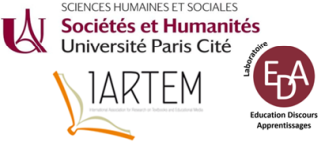This ongoing research aims to unveil how the Brazilian composer Heitor Villa-Lobos relied on a project of writing a series of textbooks to legitimate its nationwide Music Education project. In this theme, we want to answer the following question: what are the elements from the manualistics studies (Escolano, 2012) that can be found on the Guia Prático music textbooks that unveil evidences of an adjustment of a conservatorial musical model towards a regular school reality. According to those elements, the textbooks can be considered a textual genre with very specific characteristics, such as form, implicit reader, design, content hierarchy, etc. In a wider view, the textbook is a “cultural standardization device” and a “controlled cultural product”. These conceptions support the manualistics as an intellectual and academic field of research. Concerning the Guia Prático music textbooks we assume the hypothesis that its author, as a composer depended on a recognized educational engagement in order to sustain its musical career. In this direction, the public funds that would enable its educational project could financially relieve the composer (Guérios, 2009). Thus, the creation of a series of textbook would be a solid step to sustain and legitimate his project. The empirical universe of research is a collection of the three textbooks of the Guia Prático (Villa-Lobos, 2009), related to the Canto Orfeônico music method. To analyze this material, a document analysis is the main research method. To pursuit this task analytic categories are being created such as, increasing level of difficulty of the activities, teachers' orientations, printing design, ideological content, historical references, etc. A general grid is being built in order to create a visual chart of the main characteristics of the three textbooks. The last historical revised edition of those textbooks is being studied in dialogue with the researches that sustain the comprehension of the school form (Vincent, Lahire, and Thin, 2001). For those French authors, the school form is an ensemble of characteristics that enable a non-ingenuous view of the genesis of the school as a social locus, in particular after the French Revolution. This perspective refute homogenizing perspectives of school and understands it as a specific place where knowledge is encoded, cumulated and objectified. The academic subjects are a result of the school form, and music can be seen as one of these subjects. Alain Chopin's (2004) categorization of the different functions that a school manual can assume (curricular, pedagogical, ideological and documental) is employed in order to bring a multifaceted panorama of those textbooks and to point out what were the didactic resources that Villa-Lobos used to emphasize the pedagogical aspects of his project. This same author is also taken as reference to sustain the assumption that those three volumes can be categorized as school textbooks, bypassing the delicate task of classifying some pedagogical music works as educational textbooks. Villa-Lobos (1887-1959) is known as one of the most important Brazilian Classical composers. He had a short international experience in Paris in the early 1920s, when this city represented a cultural capital of the world. Due to money shortage, the young composer went back to Brazil and continually worked to find financial support to next European stays. This delicate personal situation finally changed when Villa-Lobos got aligned with the Brazilian president Getúlio Vargas dictatorship (this one aligned with the European absolutists of that time) and encountered a financial support through a Music Education program for the masses. His main pedagogical written work was the Guia Prático, a series of 137 Brazilian folklore songs arranged by the composer in the mid-1930s. This educational project, called Canto Orfeônico included the formation of music teachers that would work in regular schools. The preliminary results of this research enable to verify a complex categorization of the music material within the three textbooks reveling the composer's concern about the choice of each song of the method. That meticulous organization can indicate an aim of Villa-Lobos to legitimate its project as an educational one. The songs are presented in an increasing level of difficulty, showing a progressive program, compatible with a classical textbook formula that goes back to the 17th century. Those preliminary aspects retrieved from this analysis show that Villa-Lobos made a considerable effort to write his Music Education method in accordance to a pedagogical model of the first half of the 20th century. Without a previous teacher formation and holding a mediocre teaching practice (Guérios, 2009), the composer needed the help of many teachers to sustain his project. The three textbooks here studied are the most visible aspect of that effort. It is also notable that this whole Music Education project was subordinated to a particular political and institutional dimension that was aligned with its historical context and structurally influenced the school culture beyond the pragmatic educational issues.
References:
Chopin, A. (2004) História dos livros e das edições didáticas: sobre o estado da arte. Educação e Pesquisa. 30 (3), 549-566.
Escolano, A. (2012). El manual como texto. Revista Pro-Posições. 23 (3), 33-50.
Guérios, P. (2009). Heitor Villa-Lobos: o caminho sinuoso da predestinação. Parabolé.
Villa-Lobos, H. [1941] (2009). Guia prática para a educação artística e musical, 1. Volume – estudo folclórico musical. ABM-FUNARTE.
Vincent, G.; Lahire, B.; Thin, D. (2001). Sobre a história e a teoria da forma escolar. Educação em Revista. 33, 7- 47.

 PDF version
PDF version
